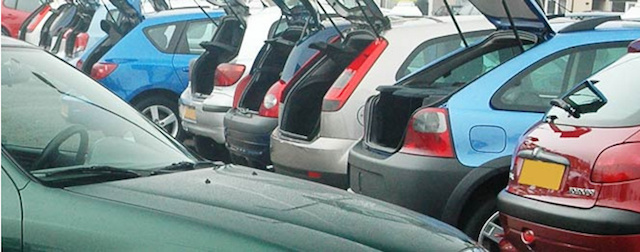
News that the New Zealand Transport Agency has allowed auction site Trade Me access to a government database to better identify fraudsters selling dodgy cars online has been slanted by spin doctors.
The stories say Trade Me has been given permission to access the Motor Vehicle Register, which lists the country’s vehicle owners. But Trade Me didn’t need permission as such – the NZTA has been pleading with the auction site for years to get tougher on dodgy listings, especially the sale of insurance write-offs from Australia.
 Trade Me has always refused. An NZTA official in November 2013 told automotivenews.co.nz: “Trade Me said it doesn’t ask for identification on other products for sale on its site, so why should it do so for vehicles.”
Trade Me has always refused. An NZTA official in November 2013 told automotivenews.co.nz: “Trade Me said it doesn’t ask for identification on other products for sale on its site, so why should it do so for vehicles.”
Trade Me Trust and Safety division spokesman Jon Duffy said back then that the onus was on the seller. “The core issue we must consider is if the vehicle has been subject to a statutory write-off in another jurisdiction, that is information a consumer would expect to know about. We are quite happy to list but the need to fully disclose is there.”
Fraudsters have made a meal of Trade Me. It doesn’t require sellers to list the vehicle’s number plate or Vehicle Identification Number (VIN). Details of a vehicle can instead be listed manually, with few required fields. At times, on compelling evidence from the NZTA, it has asked sellers to either amend or pull listings.
The trade in thousands of dodgy vehicles has piled up. In recent years more than 400 write-offs a month have been coming in from Australia to be sold on Trade Me. Almost all are insurance rejects bought for a song at auction by registered NZ car dealers and unregistered traders.
Some vehicles are new and unregistered, some are damaged. Most come from New South Wales where every write-off is statutory, meaning the vehicle can never again be registered for use on Australian roads.
 In many cases insurers will end the Australian life of a new and unregistered vehicle if it has been water- or smoke-damaged. It will be written off, auctioned, shipped to NZ, registered as new, and sold for a healthy profit.
In many cases insurers will end the Australian life of a new and unregistered vehicle if it has been water- or smoke-damaged. It will be written off, auctioned, shipped to NZ, registered as new, and sold for a healthy profit.
In one case a late model Subaru was bought at auction in Sydney for $5700 and eventually sold in New Zealand for NZ$31,000. “There is a huge market in statutory write-offs,” said the NZTA official. It’s not just the profit potential – NZ law allows the car to be born again.
A 2012 model sitting unregistered on an outer Sydney distributor’s lot for three years before being engulfed by smoke from a bushfire, can end up on the NZTA’s books as a first-registered 2015 model. Its history begins not in Australia but New Zealand.
A typical example of the money-go-round was a 2008 Holden Captiva SUV. It was listed by the NSW Road Transport Authority in 2011 as a statutory write-off. Its only value therefore was in parts.
But it was repaired, or “rebirthed”, and bought for around $4000 at auction in Australia by an Auckland used car dealer. The dealer sold the Captiva to a Hastings dealer for $28,000. The Hastings dealer sold it to a Hastings woman for $33,500.
The NZTA soon after told the woman she was driving a car that had been written off by insurers. It wasn’t long before the Motor Vehicle Dealers Dispute Tribunal got involved.
- The NZTA red-flags damaged cars coming into NZ. But the entry point, the wharf, is the only point at which vehicles can be red-flagged. Beyond the wharf, it’s too late, even if compliance centres find evidence of shoddy repairs, corrosion, or damage. In the end the buyer may never know the vehicle’s history.
